11 Minutes
The title alone: Exit, Fame, or Funding, set the tone for one of the most dynamic discussions at this year’s Startup Fair. On the Core Stage at LITEXPO, journalist Jennifer Sieg, co-founder of The Fact Studio, moderated a frank, sometimes humorous, and deeply insightful conversation that captured the three archetypal paths of startup success.
Representing three distinct journeys were Augustinas Stirbis, VP of Engineering at CAST AI, Matas Kemzūra, Chief Growth Officer at Pulsetto, and Marius Bausys, Country Manager at Ebury Partners Lithuania and founder of ArcaPay, the fintech recently acquired by Ebury (a Banco Santander company). Their dialogue moved fluidly between lessons learned, cultural shifts, and the psychological realities of building, scaling, and exiting a startup in a market that changes by the week.
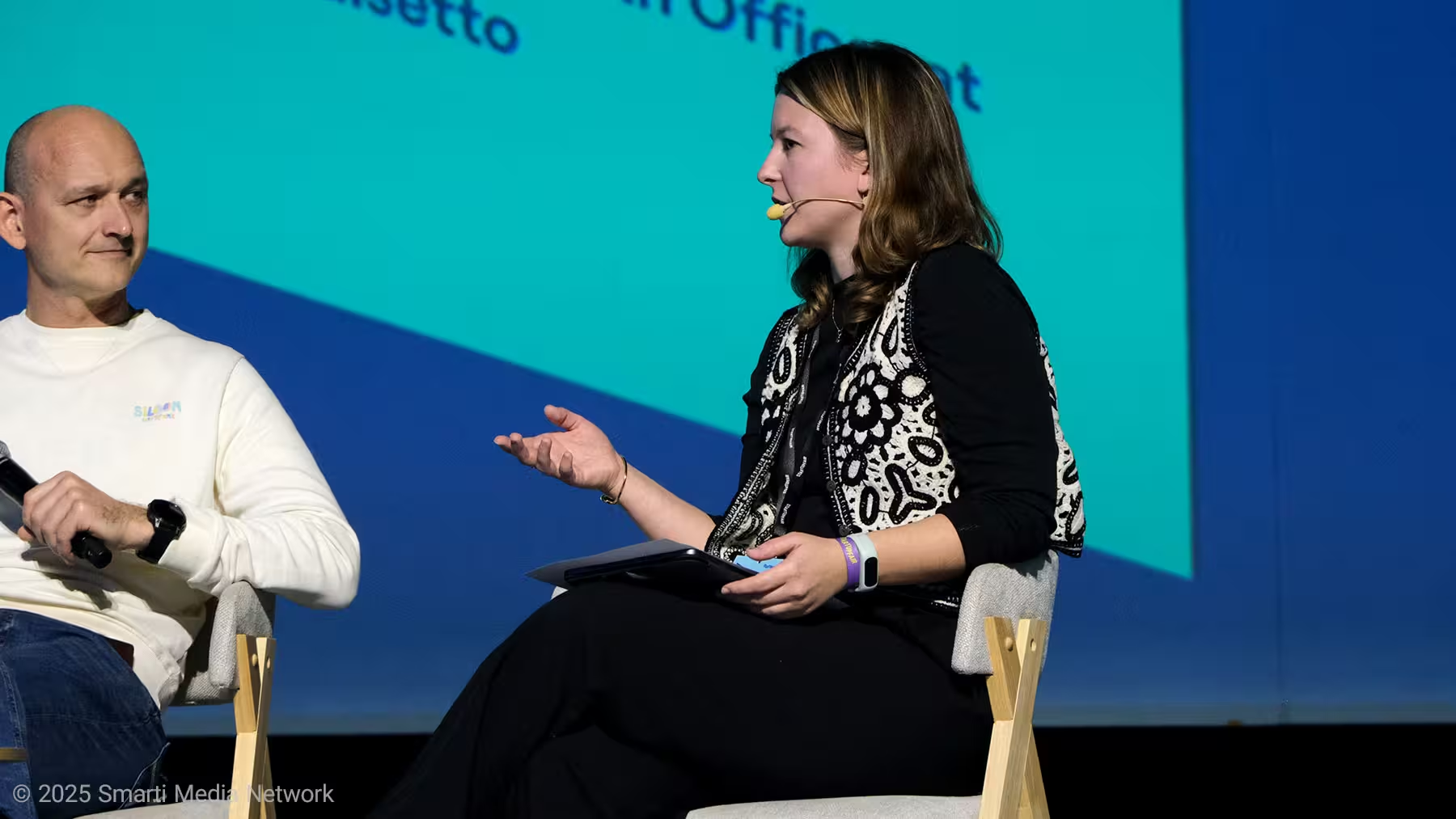
From Early Chaos to Predictable Growth: CAST AI’s Journey Through Funding Rounds
When asked what had convinced investors to believe in CAST AI early on, Augustinas Stirbis didn’t romanticize the story.
“In the early rounds,” he said, “the idea didn’t really matter that much. What counted most was that my co-founders were serial entrepreneurs who had already built and sold successful companies. Investors were betting on people, not products.”
He admitted candidly that their first two products had failed. But those failures, he explained, actually validated the team’s ability to execute, to adapt quickly, and to keep building. “That’s what investors saw—a team that could take a hit and keep going.”
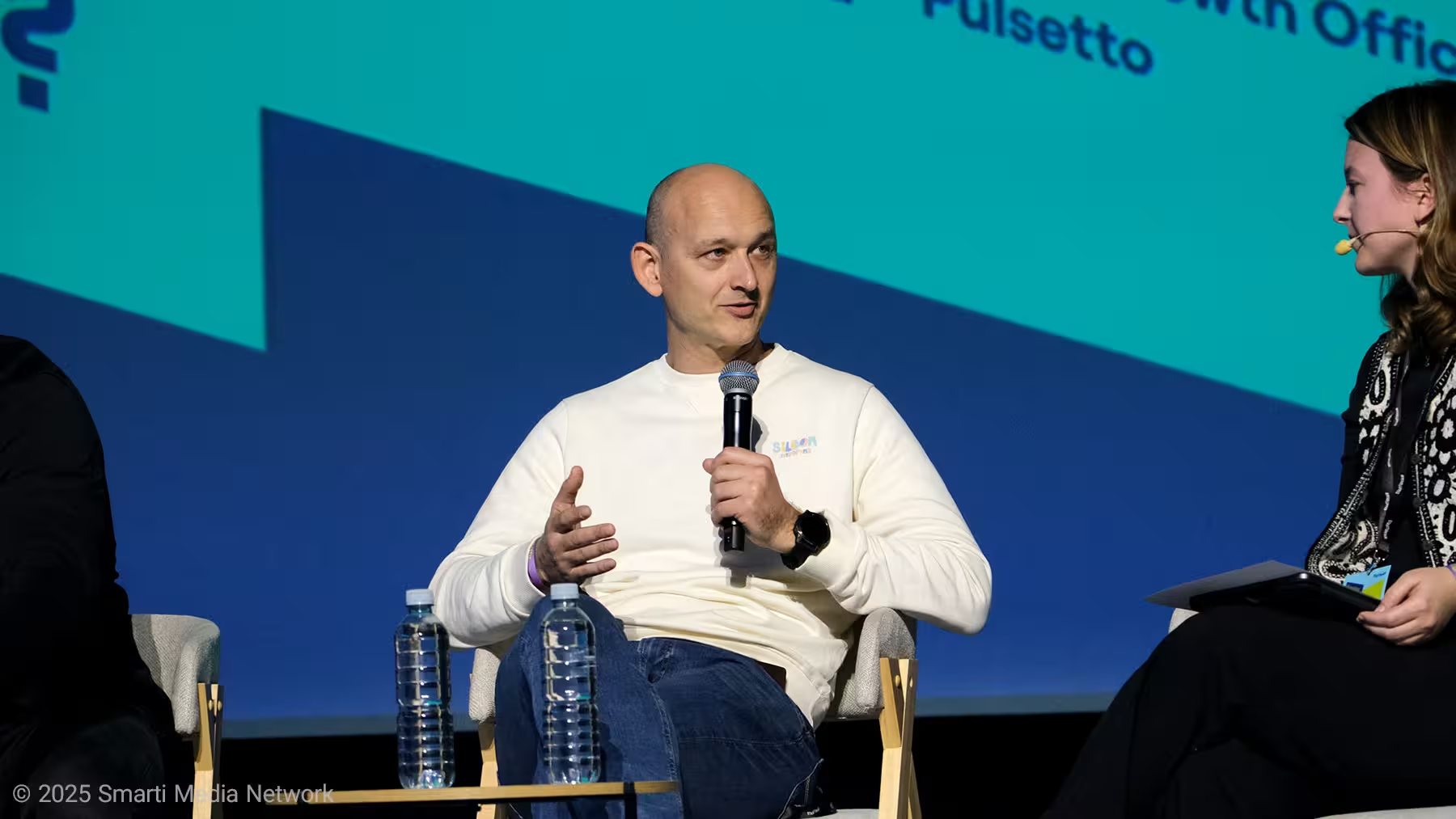
But if the early rounds were about personality and track record, the Series round, he said, “is the hardest of all.” That’s when a startup must move from “proving a miracle” to “building a reliable company with repeatable results.” The team’s culture changes; processes need to be established; data replaces instinct; and “sometimes you’re forced to bring in the suits.”
Stirbis described the transformation not as a dramatic pivot, but as a steady evolution from chaos to order. “The boring hockey-stick growth,” he said, “that’s what really matters. You need predictable, process-driven results. That’s what attracts serious investors.”
The Solo Founder’s Path: ArcaPay’s Long Road to Exit
For Marius Bausys, the story was the opposite. He built his cross-border payments startup, ArcaPay, entirely without external funding—a solo journey that demanded patience, compromise, and self-awareness.
Before founding the company, Bausys had spent years on a trading floor in London’s financial district. “I went from four screens in the middle of the City,” he recalled, “to sitting in my living room with a laptop.” The move symbolized more than a change in workplace; it meant giving up stability, prestige, and the social circle that came with corporate life.
“You become the crazy one,” he said with a smile. “Your friends keep climbing the corporate ladder, getting bonuses, and you’re there working on something that might never work.”
Bootstrapping, he explained, brings a unique rhythm to growth. In the first few years, progress feels fast, but after that, the absence of capital limits how far and how quickly you can go. “We explored venture capital,” he said, “but our business wasn’t the kind that VCs want. They want moonshots. We were a solid three-to-five-x business—not the kind of high-risk, high-reward story that excites investors.”
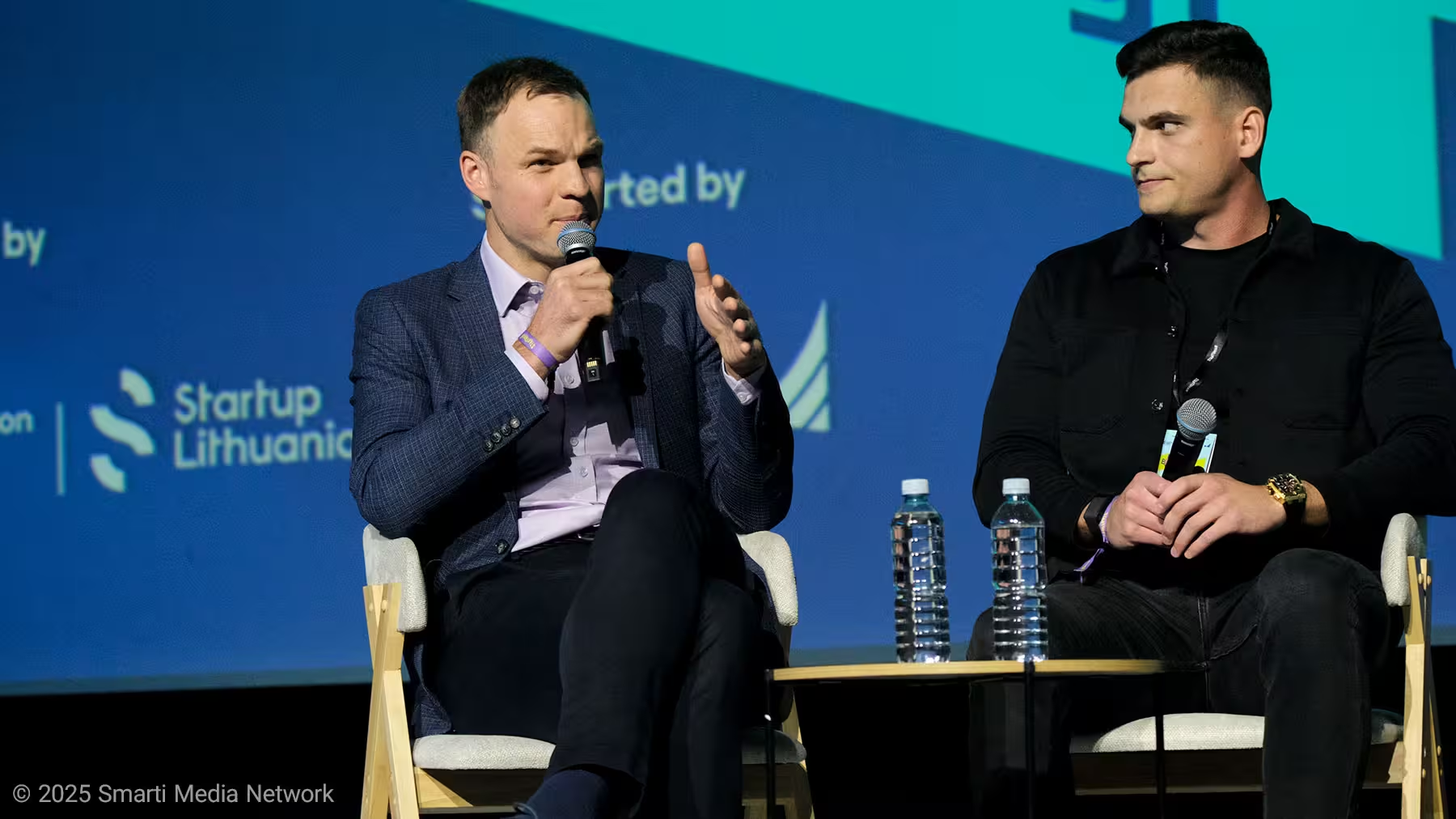
One of the most profound trade-offs, he added, came in hiring.
“In a corporate job, you’re surrounded by top-tier talent. In a small, self-funded startup, you can’t hire those people. You work with whoever you can afford. It took us five years to get back to a team of truly high-caliber individuals.”
That patience paid off. Years later, Ebury—an international fintech giant owned by Banco Santander—came knocking. Unlike countless shallow acquisition offers ArcaPay had received before, this one made sense. “They weren’t just buying a license or entry to a market,” he said. “They wanted a strategic partner.”
The fit was natural: both companies specialized in cross-border payments and FX for SMEs. Ebury operated in 29 countries but had no footprint in the Baltics. “It was a perfect match,” he said.
Bausys had known Ebury since his banking days, even visiting clients who used their services. “It felt different,” he said. “Bringing one of Europe’s largest banks into my home country—that’s meaningful.”
The acquisition gave his team access to opportunities they could never have created alone. “At some point, you realize it’s not just about you anymore,” he said. “It’s about giving your people a bigger stage.”
Pulsetto’s Fame, Growth, and Growing Pains
Turning to the “fame” part of the panel, Matas Kemzūra described how Pulsetto’s journey had been fueled by rapid growth, relentless experimentation, and an unshakable mission. “We’ve grown more than 3x for three years straight,” he said. “It’s because of three things: product, team, and marketing.”
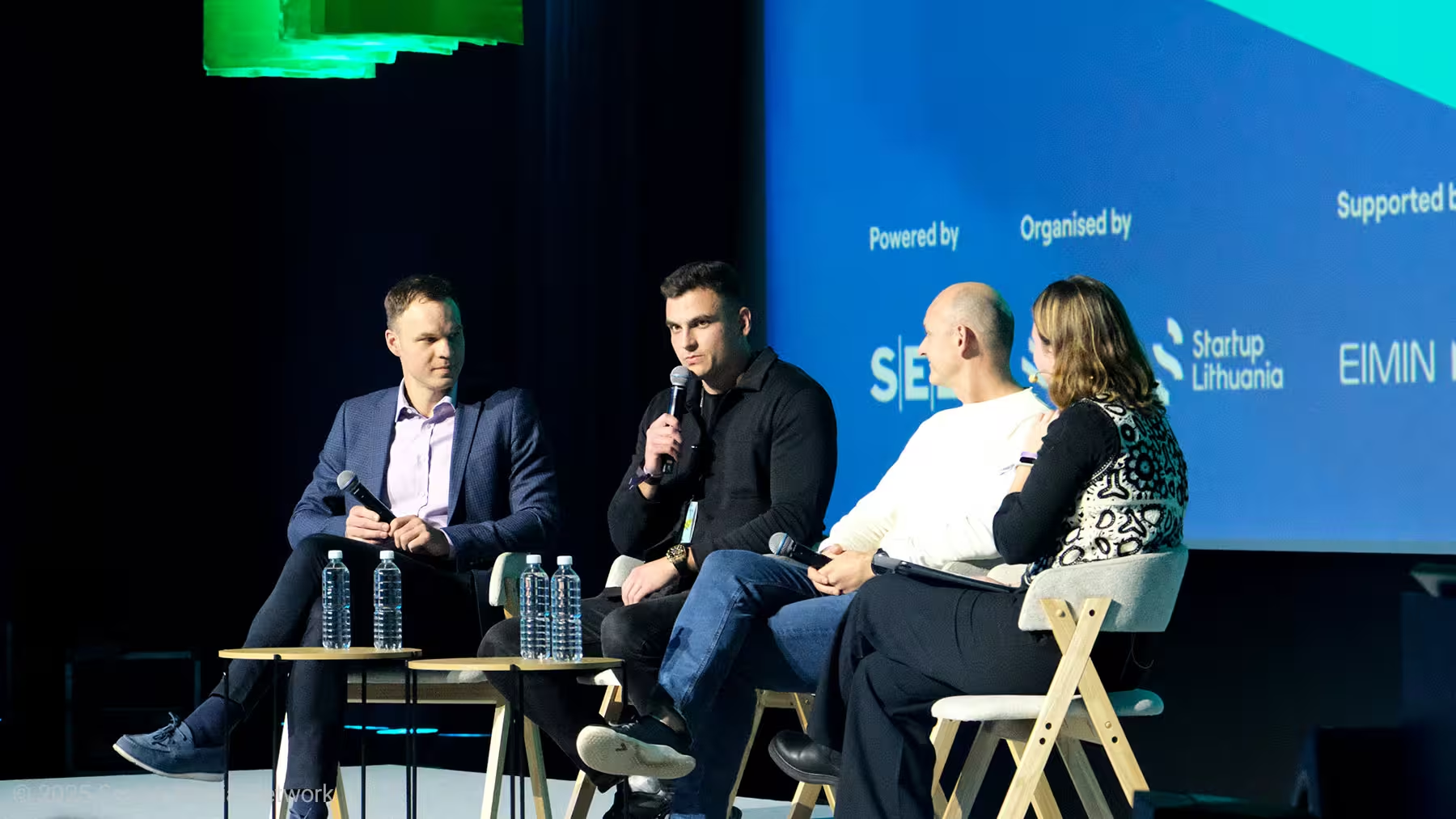
First, the product—Pulsetto’s vagus nerve stimulation devices—offered real, measurable improvements to users’ wellbeing. “It doesn’t just change lives,” he said, “it improves them.”
Second, the team. “We have a strong mission and founders who live it every single day. That kind of leadership creates full commitment from everyone.” Kemzūra used the phrase extreme ownership to describe their culture: “We never surrender. We don’t accept failure. We always find a way to prevail.”
And third, aggressive marketing. “We test constantly, we fail fast, and we move forward.”
Pulsetto’s biggest visibility boost came from its appearance in the Netflix documentary Don’t Die. “It was a dream scenario for any marketer,” he admitted. “But honestly, we weren’t ready.” The surge in demand tested their production capacity. “We had growing pains—logistics, manufacturing, everything. It taught us a big lesson about planning for every possible scenario: realistic, maximum, and dream.”
Despite the chaos, the results were extraordinary. “Our Q1 sales this year were higher than Q4, which never happens in e-commerce,” he said. “Visibility at that level changes everything—but it also tests everything.”
Building and Keeping the Right Team
The conversation then shifted to team-building, one of the recurring themes throughout Startup Fair 2025.
For Stirbis, early hires are always risk-takers. “They’re the ones who join you when you have nothing,” he said. “They might lack credentials or fancy resumes, but they have hunger.” These people, he argued, are the ones who create the magic that defines a company’s early success.
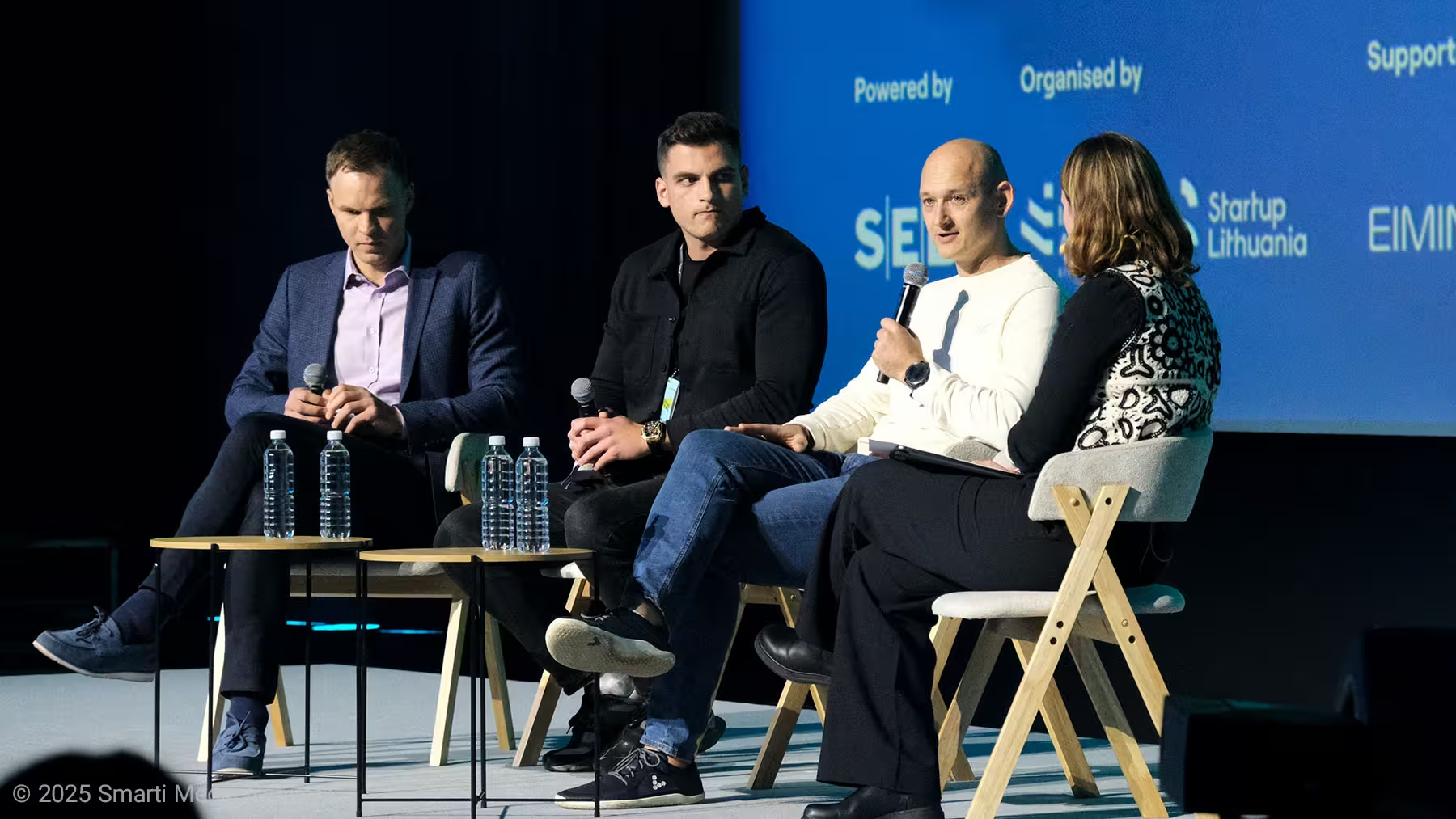
“But when you start hiring more experienced people,” he warned, “you lose some of that magic. People with big-company credentials are great, but they tend to follow established paths. Early founders need to break rules.”
His advice: build self-correcting systems. “In a startup, 60 or 70 percent of ideas fail. What matters is whether your organization can learn quickly, adapt, and try again. That’s the only way to survive.”
When the Culture Evolves After Funding
Stirbis elaborated on how culture evolves after major funding. “As the company matures,” he said, “you attract people who are less comfortable with risk. They change your culture. Investors, too, want stability and predictability. But startups are unpredictable by nature. That’s why you need feedback loops and self-correcting mechanisms—because no one really knows which ideas will work.”
Making Your Brand Stand Out
Asked how to make a brand stand out—to investors, customers, or potential acquirers—the panelists offered three distinct views.
CAST AI’s approach, Stirbis said, was customer obsession. “One client told me, ‘I don’t even know what you’re working on next, but whatever it is, I want to try it.’ That’s the best feedback you can get.”
Pulsetto’s approach, according to Kemzūra, was numerical discipline. “At the end of the day, every business is a numbers game—your CPA, your COGS, your AOV. If your backend outperforms your competitors, you can afford to acquire customers faster and dominate the market.”
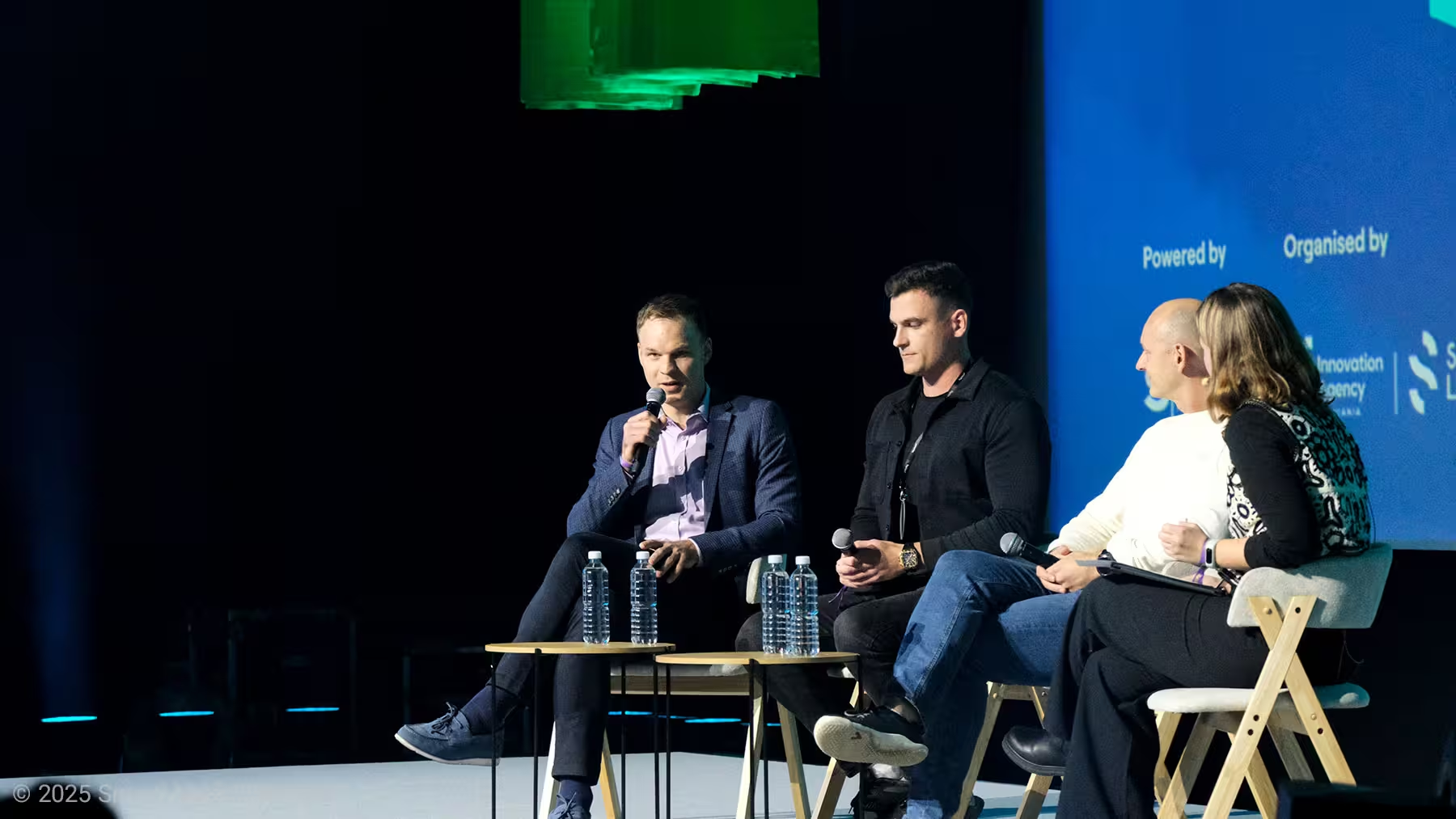
ArcaPay’s approach, Bausys said, was simple integrity. “Because we were bootstrapped, we never had to pretend we were bigger than we were. We just did things the right way. If you do the right thing long enough, you get noticed.”
Finding the “Right Path” (Or Admitting There Isn’t One)
Near the end, Sieg asked whether there’s such a thing as the right path to success.
Kemzūra laughed. “Why waste time figuring out the right path? There are hundreds of them. Just burn the boats and go. Action beats analysis.”
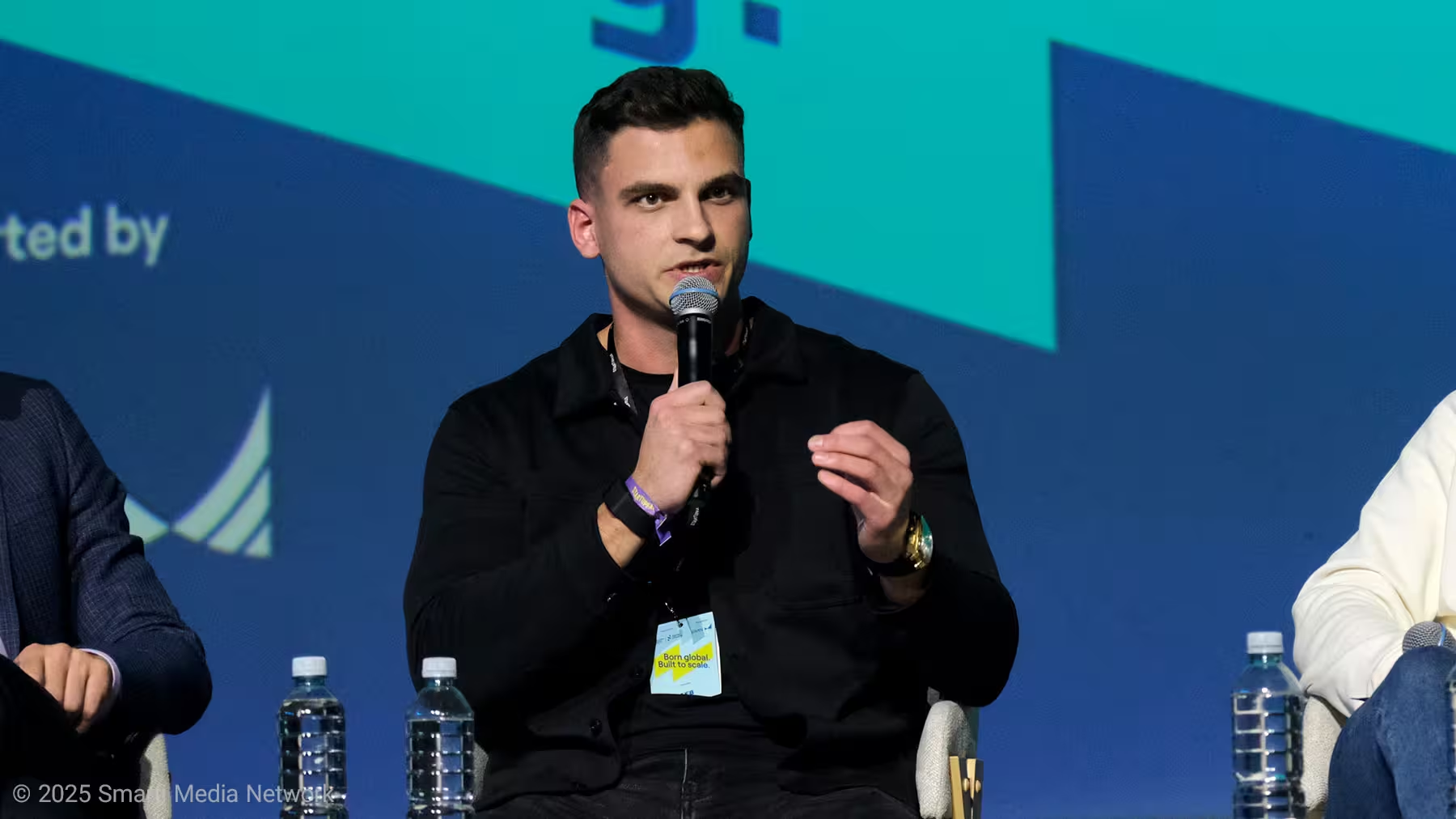
Stirbis added that the only universal rule is to stay close to your customer and your core problem. “Everything else is circumstantial. If your market and team call for aggressive growth, take the VC route. If you’re in a niche and prefer slow, sustainable scaling, that’s fine too.”
Bausys concluded, “I’ve never believed there’s just one path. Success comes in many forms. Optimize for happiness, not just valuation.”
Lessons from the Funding Frontlines
Reflecting on CAST AI’s experience, Stirbis said their partnership with Union Square Ventures in New York began when they weren’t even raising. “They reached out to us. We had a few conversations, kept in touch, and by the time we were ready, we already knew each other well.”
His takeaway: start building investor relationships before you need money. “Don’t wait until you’re close to the wall. Begin the conversation early. Fundraising is easier when it’s not desperate.”
He also offered practical advice for startups eyeing U.S. capital: involve legal counsel early, prepare a clean English-language data room, and meet people face-to-face. “U.S. investors are very people-centric,” Sieg added. “It’s worth flying there and shaking hands.”
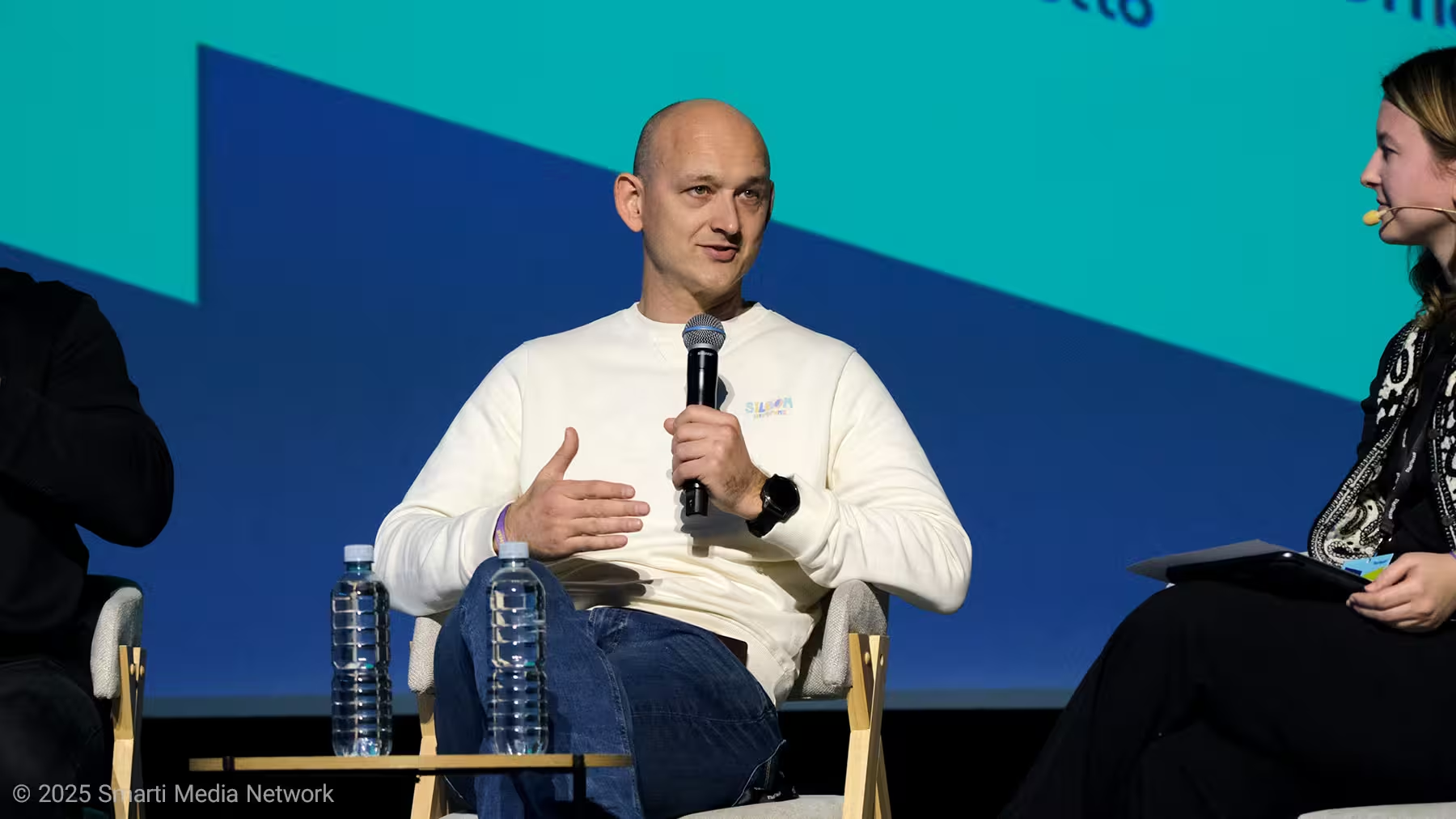
From Series A to the Next Hill
One question from the audience asked whether raising a Series A adds pressure.
Juozas Nainys, co-founder of Atrandi Biosciences (joining briefly from the audience), answered: “It’s like climbing a hill. You reach the top and realize there’s another one ahead. The higher you go, the steeper it gets. The risk doesn’t disappear—it just gets bigger.”
The Kubernetes Bet
The final audience question was a technical one: why did CAST AI build its platform on Kubernetes (K8s)?
Stirbis explained that during his years in banking, he saw even 200-year-old institutions choosing Kubernetes as their strategic platform. “We made a bet that K8s would become the de facto standard—and it did.”
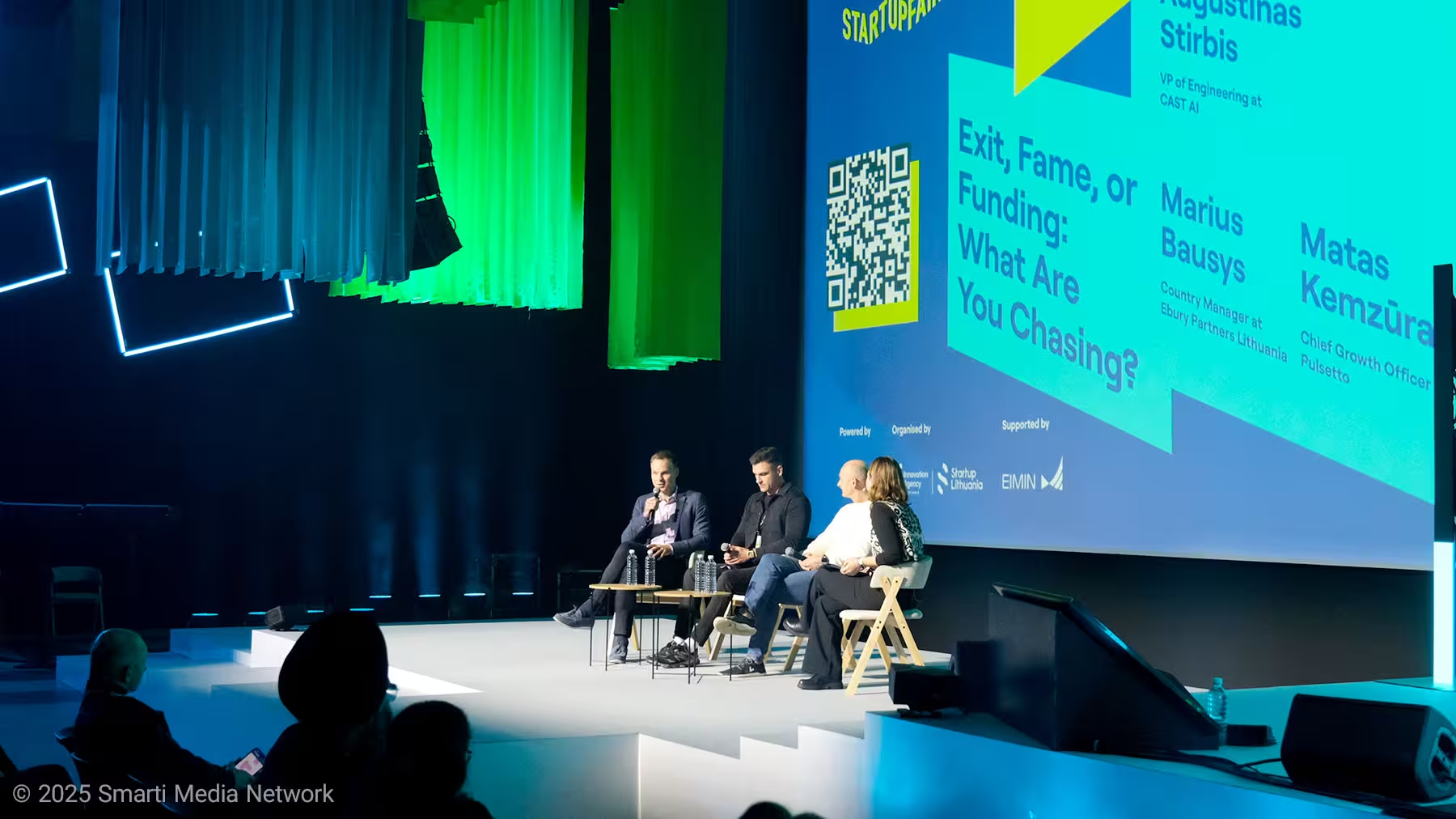
Closing Thoughts
As the panel wrapped up, Sieg asked each speaker for one underrated piece of advice for founders.
Stirbis said: “When raising capital, don’t just chase the highest valuation. Right-size your round. Find the right partner. You’ll burn through the capital, but your investors will stay on your board long after the money’s gone.”
Bausys added: “A high valuation can become a trap. If you raise at a $100 million valuation, your next climb becomes steeper. The math matters less than the partnership.”
Kemzūra smiled: “Expect the unexpected. And when it happens, enjoy it.”
Takeaways from the Core Stage
The conversation—half humor, half hard truth—distilled three philosophies of building a company in today’s European startup scene:
Funding is execution: raise when you don’t need it, prove stability, and keep your processes repeatable.
Fame is focus: visibility amplifies both your strengths and your weaknesses—prepare for both.
Exit is timing: wait for a fit that feels right both strategically and humanly.
Each story, though different in shape, circled back to the same essence: success isn’t about chasing the “right” path—it’s about knowing why you’re on it, and building a company that learns faster than it fails.
Comments
mechbyte
Wait, investors bet on people not product? feels risky to generalize. Also Netflix fame sounds like a trap, how do they scale that surge? curious…

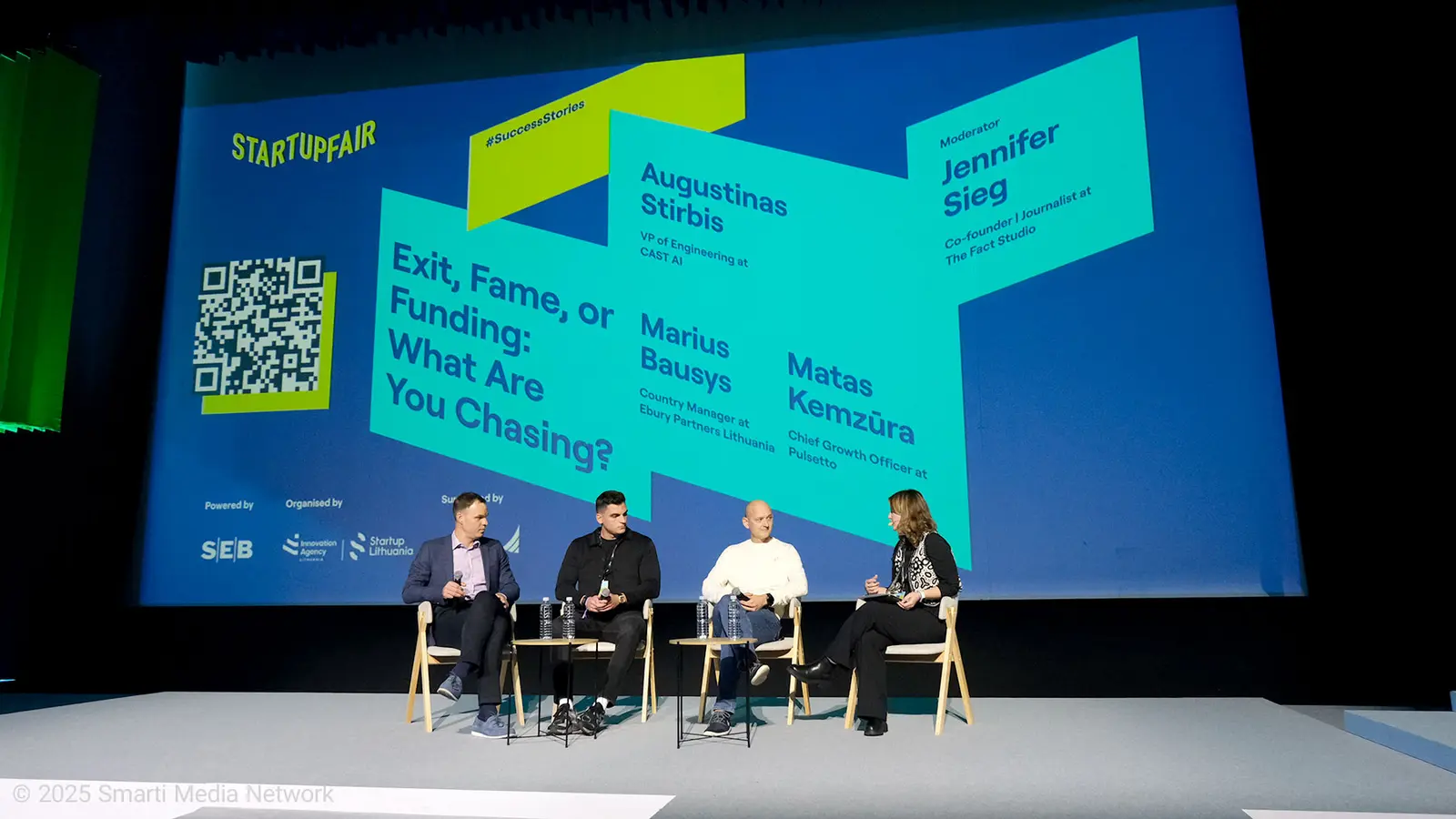
Leave a Comment